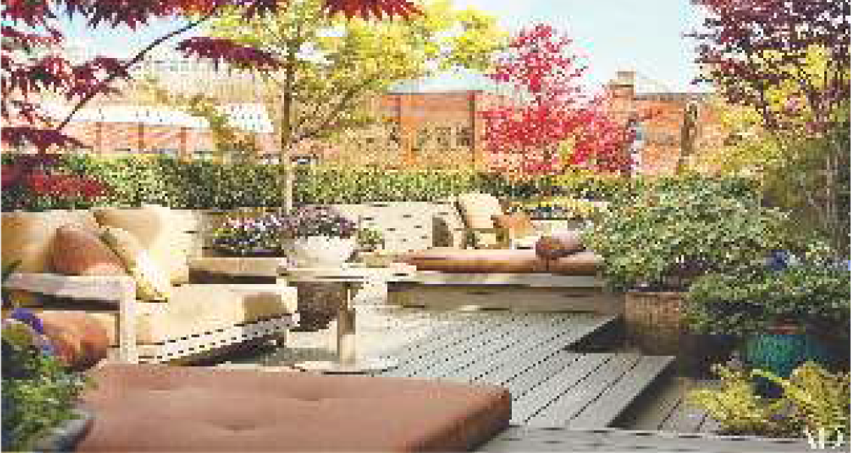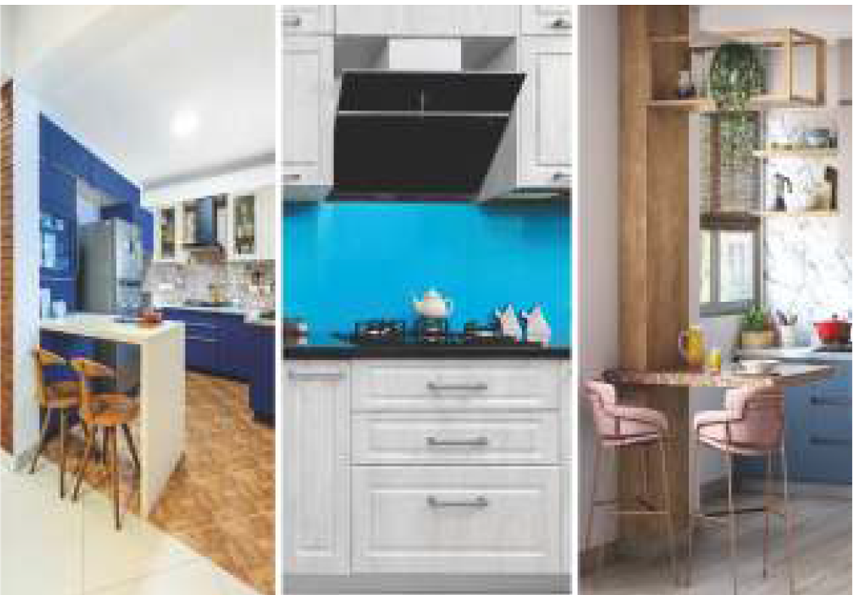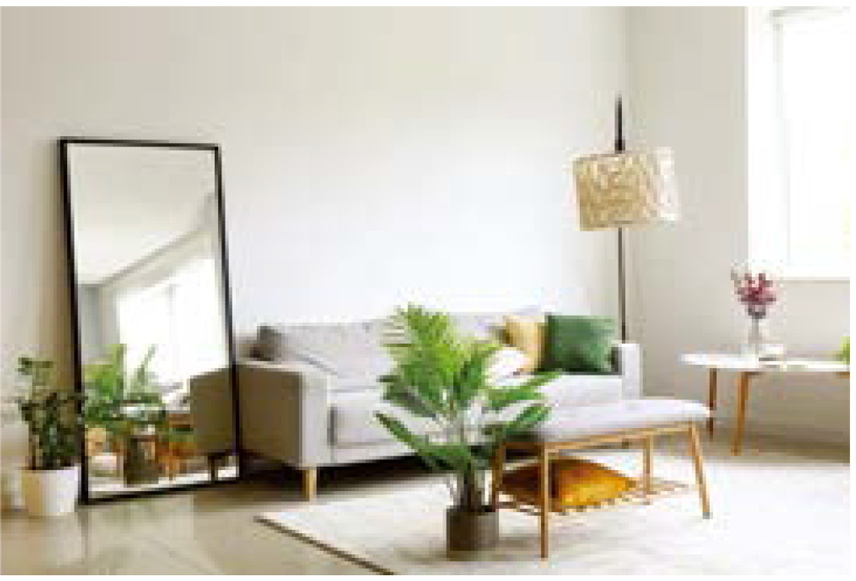How To Use Organic Materials For Home Decor?
Organic materials combine aesthetics and sustainability for a visually stunning space.
Organic materials, or materials derived from nature, have always been an evergreen decor choice. If you are looking for a way to add some visual interest to your space, these should be your go-to choice as their textures not only cater to the vision, but also provide a tactile element for a multi-sensory experience. Moreover, being organically sourced, these are environmentally sustainable and do not contain any materials that can pose health risks. This article is your one-stop solution on how to incorporate organic materials in your home decor and make the most out of it.
Wood selection
Decor pieces made from wood add a warm and earthy touch to the space, making them blend well with any kind of decor aesthetic. While incorporating wooden elements into your decor, keep in mind the following:
- Types: Hardwood like oak and walnut are durable and can withstand a considerable amount of wear over time and their rich grains have an elegant appearance. This makes them suitable for furniture like dining tables and cabinets. Softer woods like pine and cedar bring a rustic charm at a more affordable price and are ideal for applications like shelving, accent pieces or even DIY furniture-building projects.
- Finishing: Using natural oils like linseed or tung for finishing is recommended as they penetrate deeply and enhance the natural beauty of the wood without resulting in a glossy finish or making it look artificial. The finish also forms a protective layer against moisture and dirt, thereby making maintenance easier. Consider refreshing the finish regularly to maintain a fresh appearance.
Textile choices
Spice up the texture element of your space by balancing the hard materials with soft textiles. Here’s how you can do it:
- Bedding: For bedding purposes, comfort is the priority. It is therefore recommended to go for organic cotton or linen sheets and pillow cases as these fabrics are grown without pesticides and processed without harmful chemicals. Their breathability and softness promote a comfortable sleep environment.
- Rugs: Rugs are an easy way to add a textured, earthy element to the space as they just need to be placed on the floor and you are good to go. In high-traffic areas, they provide an extra layer of protection to the flooring and can also be modified in terms of the comfort offered by layering with other softer rugs. Depending on the size and style, you can also change their location as per your preference.
Stone Elements
Yet another popular choice of material for hard decor elements is stone. Make the most out of it by using it in the following ways:
- Countertops: Natural stone countertops, for example granite or soapstone, are not just visually stunning but also highly durable. While granite offers a wide range of colours, soapstone is known for its softer texture and a more rustic appeal. Moreover, both these materials have exceptional heat resistant properties, making them ideal for use in kitchen environments.
- Decorative touches: Smooth pebbles placed in decorative bowls or at the base of potted plants can serve as a unique decorative touch. Slate is a material that is compatible for use as coasters or decorative trays, an effortless organic addition to your home decor.
Furniture Design
While incorporating organic elements into your furniture, here’s what should be considered:
- Sustainable brands: Several furniture companies prioritise eco-friendly materials to make their products. Conduct a thorough research on these companies and the quality of their materials and products for a more sustainable decor arsenal.
- Multi-functionality: Enhance the functionality of your space by opting for furniture that can serve multiple purposes. These might include storage ottomans, convertible sofas or nesting tables. Use this simple trick to minimise clutter while maximising the utility of your space.
Natural Lighting
Organic decor isn’t just limited to tangible stuff. Adequate natural lighting can go a long way in enhancing the overall impact of your decor.
- Windows: To strike a balance between privacy and natural lighting, install sheer, organic cotton curtains on windows to filter out the natural light streaming in. The soft, diffused glow this results in significantly enhances the organic feel of the space.
- Mirrors: Strategically positioning mirrors throughout your space facilitates reflection of light, thereby creating an illusion of spaciousness. By bouncing around natural light, a well-placed mirror can brighten the corners that are not covered by direct light.
Indoor Plants
The simplest way to add a refreshing touch to your space is by throwing in a dash of natural greens. Indoor plants can freshen up your space like nothing else if the following is considered:
- Variety: It is recommended to go for low-maintenance plants while selecting them for your indoor space. Snake plants can help purify the air while pothos can survive in various lighting conditions and peace lilies can signal you when they need water.
- Planters: When it comes to choosing the containers for your plants, go for biodegradable pots made from materials like coconut coir or terracotta. Not only do they admirably complement the overall organic aesthetic, but also facilitate better moisture control.
Wall Treatments
You can even use up the available wall space to enhance the organic vibe of your space. Here’s how:
- Natural paint: Earthy shades for your walls like sage green or terracotta, preferably in low-VOC or non-toxic varieties, can help contribute to the organic spirit of the decor. Along with making the space feel grounded, they also promote a calming atmosphere.
- Wood panelling: A wooden wall is a popular choice for accents. Consider using reclaimed wood for this purpose for added character and warmth. The unique grains and colouwa of the material tells a story about its past.
Artisan Touches
For all the craft lovers out there, organic materials offer endless creative artistic possibilities.
- Handmade Pottery: Pottery can be easily acquired from local artisans. Unique handmade pieces can serve as excellent vases, serving dishes or decorative elements that infuse the space with your personality.
- Textile Art: Woven wall hangings or tapestries made from natural fibres can be considered for some texture and warmth. By enhancing the organic feel of the space, they can act as an attractive focal point.
Functional Accessories
Incorporating organic materials in decor doesn’t mean you would have to compromise functionality. Here’s how you can ensure both:
- Kitchenware: Organic accessories can be easily incorporated into your kitchen space. Think wooden utensils, bamboo cutting boards and glass containers. These materials are the perfect blend of aesthetics, durability and environmental sustainability.
- Bath essentials: Upgrade to natural loofahs and bamboo soap dishes for your bathrooms. Further enhance the spa-like atmosphere and add to the organic vibe by incorporating cotton towels in neutral shades.
Outdoor Integration
Don’t limit the organic theme to indoor spaces alone. Here are some tips for outdoor integration of the theme:
Seamless transitions
Large sliding or folding glass doors that open up to outdoor spaces can create a sense of continuity and flow between indoor and outdoor spaces.
- Natural patios: Natural stone pavers or wooden decking can significantly enhance outdoor areas. Consider materials like cedar or redwood that are resistant to decay and also provide a beautiful, organic look that goes well with landscaping.


-webp.webp)

-webp.webp)





.png)
.jpg)




-is-planning-a-₹20,000-crore-Battery-Energy---2025-10-17T152118.433-preview.webp)
-is-planning-a-₹20,000-crore-Battery-Energy---2025-10-17T151305.531-preview.webp)
-is-planning-a-₹20,000-crore-Battery-Energy-(10)-preview.webp)
-is-planning-a-₹20,000-crore-Battery-Energy---2025-10-17T150106.202-preview.webp)
-is-planning-a-₹20,000-crore-Battery-Energy---2025-10-17T122052.841-preview.webp)